Dead Cells is as good as they say, and then some. Typically, punishing difficulty and tension associated with the absence of checkpoints make roguelites an acquired taste. Developers at MotionTwin, however, designed their cycle of permadeath to be captivating to genre veterans and newcomers alike.
What is it about Dead Cells that engages fans of Metroidvanias and roguelites both? Why do players seem to swallow it whole — hook, line, and sinker?
Well, for starters, it introduces itself extremely well.
The Hook
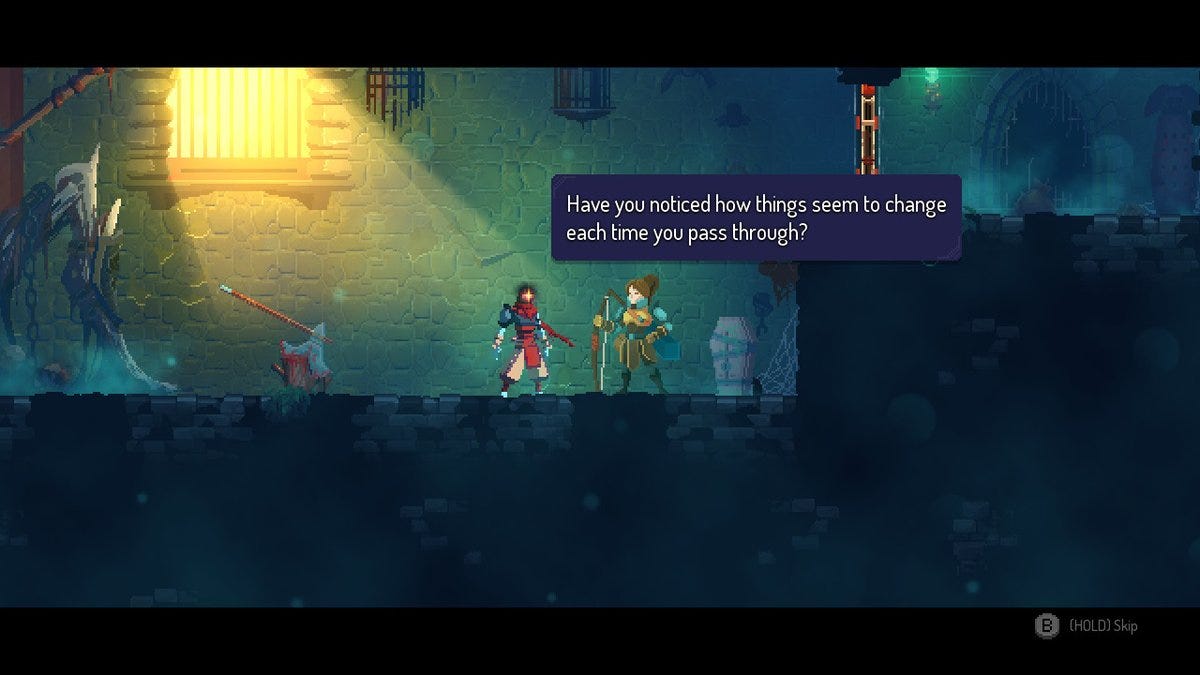
The first few spawns serve to pique the players’ interest until the positive feedback loop kicks in. To this effect, they each begin with a slightly different cryptic dialogue with the game’s first NPC. The respawn area changes as well to reinforce the idea that the game world is constantly evolving. Dying becomes exciting since it progresses the story. It’s a very effective way to communicate that death is progress that pays off big time, both at the start and later in the game.
…line…
One of the things Dead Cells is famous for is its merciless difficulty, but it’s not apparent in the starting level. Although they hit hard, the beginning monsters telegraph their attacks with two weeks’ notice. They serve to teach the player the basic patterns of attack-dodge-attack. This area isn’t exactly a tutorial, though. You always start there, and it’s the only constant in all your runs.
Dead Cells lets the player achieve the state of flow very quickly. It feels amazing to see your skill improve as dramatically as this game makes it seem. You’ll eventually race through beginning areas at breakneck speed, downing entire groups of enemies in a single combo.
Once it stops providing story beats and settles into a repetitive form, there’s no longer an apparent reward for death. What better way to rectify this, than designing the first and the most often replayed level in a way that makes the player feel great about themselves? When you’ve just had your teeth kicked in yet again, the option to restart lets you vent frustration by making a cathartic run through the levels you’ve already mastered, that also earns you points towards another persistent upgrade. It’s an addictive pattern that keeps you playing well after the initial sense of wonder dissipates.
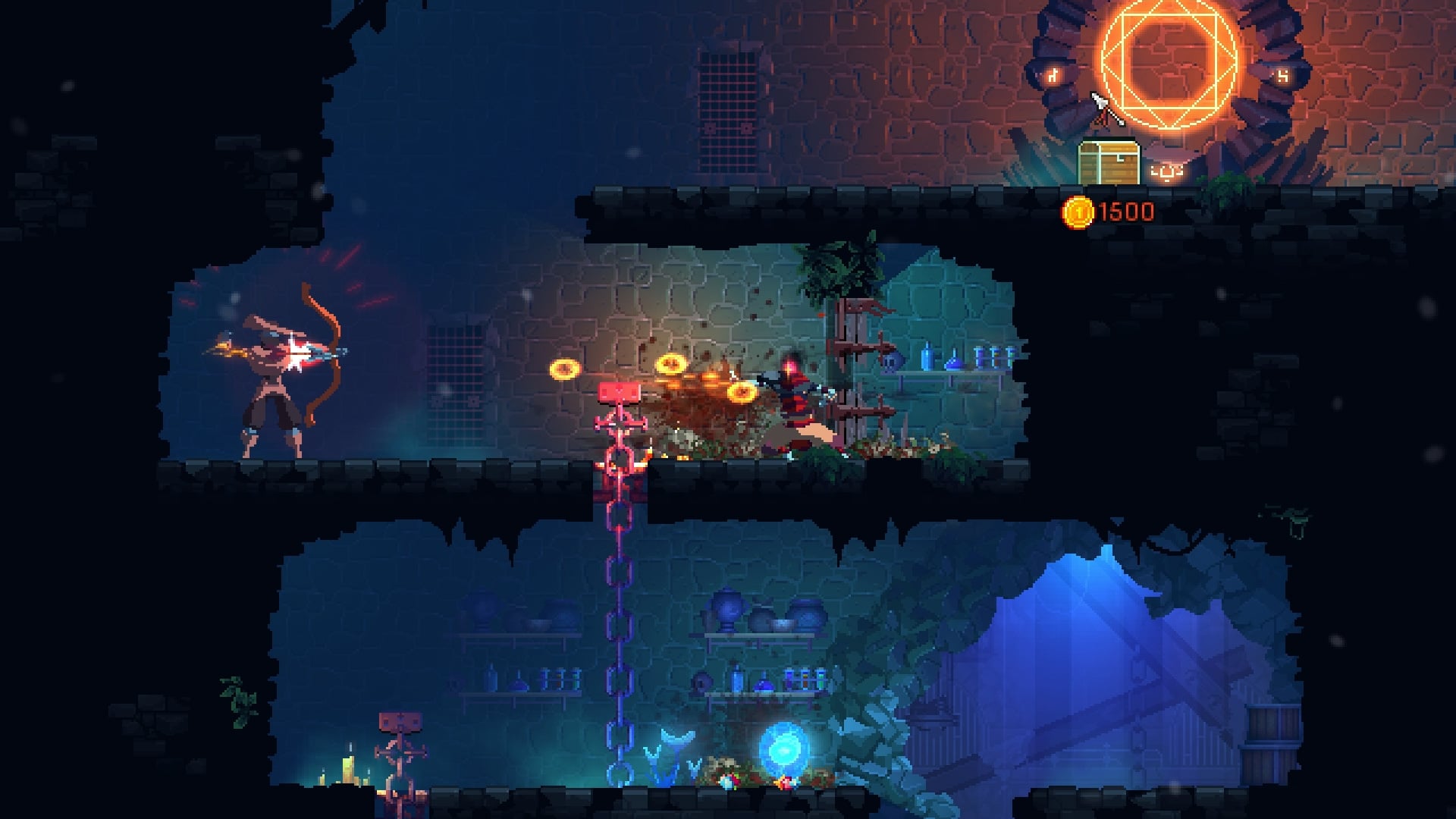
…and sinker
This pattern extends beyond just the starting area. As Dead Cells ramps up in difficulty, it’s usually by introducing a new enemy or two per level. You overcome that challenge by figuring out the best way to fight those new monster types. Sooner or later, the Promenade of the Condemned is just as easy as the starting level, then the Ramparts becomes a cakewalk, and so on for the entire game.
This element of Dead Cells’ design also contributes to the perception that you’re actually making steady progress by making player skill the gateway to new levels. The game has no checkpoints, yet it always feels like you’re stuck on something particular. In this way, the locations you’ve figured out, once beaten, kinda stay beaten. This is what running through levels you’ve already mastered in Dead Cells looks like:
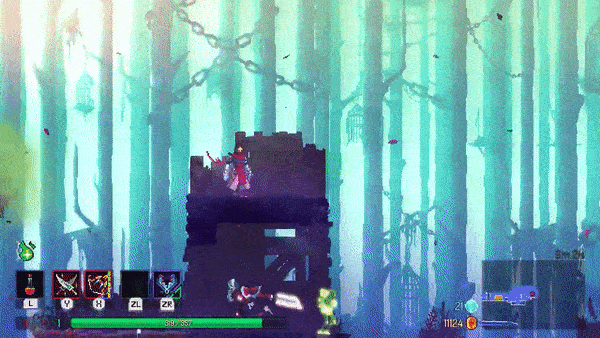
The locations preceding the one where you’ve just died become playgrounds for self-expression. You cut through them like a hot knife through butter, and in this way, the game also reassures you that, yes, you are “gitting gud.”
It’s also what gives meaning to the fact that Dead Cells is a hybrid game — if it was either a regular Metroidvania or roguelite this effect would be lost. Checkpoints would make players stuck in a difficult challenge until they surpass it by learning through repetition or luck. Bosses would have to be easier and levels more padded. Roguelites, on the other hand, often rely heavily on persistent upgrades to facilitate player progress. That crutch, with time, makes starting levels boring to play and also reduces the impact of skill. Dead Cells dodges both pitfalls — it feels more dynamic and joyful than Hollow Knight, while the fact that player skill is the absolute measure of progression makes it seem fairer than, say, Crypt of the Necrodancer.
Add some bait
There are a few persistent upgrades in Dead Cells, though. Even when it seems like you keep running face-first into a concrete wall, there’s always a carrot at the end of the stick. Upgrades get exponentially more expensive, but they’re there for you to bank your cells in. You don’t need to buy the upgrades all at once, so as long as you reach the shop at the end of a level, you’re always making progress by just playing the game.

It’s a clever system that makes for a journey with a predictable twist: by the time a player actually reaches an expensive upgrade, they usually improve at the game enough to no longer need it for the current challenge. It’s reinforced by the upgrades never feeling like they win the game. An additional charge of health flask lets you heal one more time over the course of a level, but a truly bad play will still result in a swift death.
To further keep rewarding the player, various lore scenes pop up at random, so that even familiar levels can surprise. Then there are bonus goals to strive towards, like the time-locked doors in each area that only open if you’ve been fast enough this run.

In a brilliant fusion of Metroidvania & roguelite idiosyncrasies, acquiring persistent powers allows you to progress to alternate new locations in your next run. The levels are effectively grouped into tiers and, once unlocked, can be mixed & matched to compose your own favorite path through the game.
Designing the ‘one more time’ loop
At this point, the game designers at Motion Twin probably let out a sigh of relief thinking “We’ve got it”. They set the hook to keep that initial player curiosity for as long as possible. Then they made sure we’ve got plenty of positive reinforcement to keep on playing. Finally, they used the best elements of the RogueVania format to make the players feel they’re making progress even when it’s microscopic at best.
It’s the secret sauce they brought to the genre from their experiences as browser & mobile game developers (in early game design documents, Dead Cells was meant to be free-to-play). With past games, they learned how to create feedback loops that engage and hold the player and they used the very best practices to greatly enhance what, at its core, is already an awesome game.
During a Reddit Ask Me Anything session, one of the creators deepnightbdx had this to say:
Our past F2P experience helped a lot designing the permadeath aspect of the game: make most deaths “fair”, ensure runs aren’t too long and make sure the player progresses between runs.
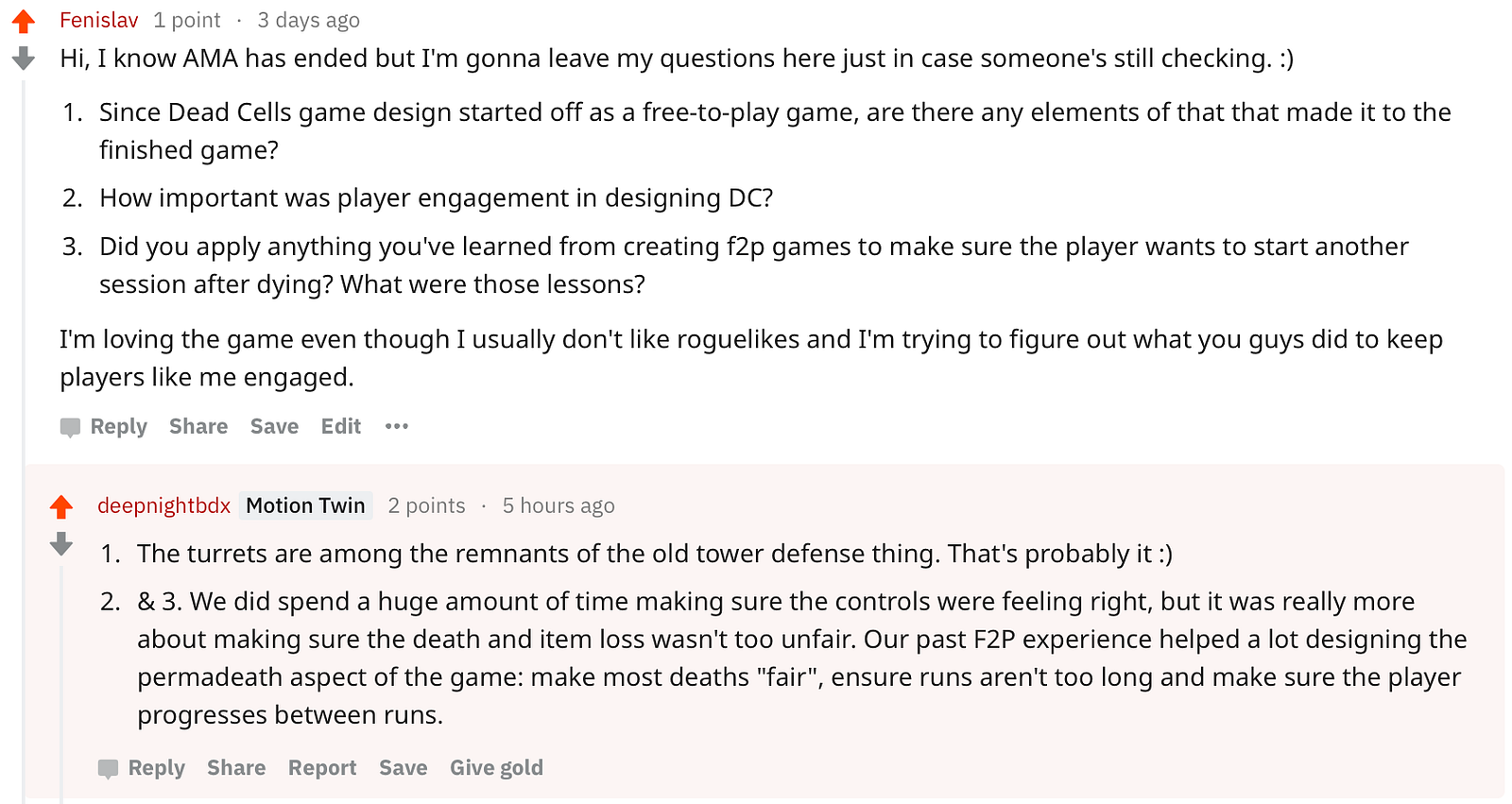
Free-to-play pedigree isn’t a bad thing
Comparing a player enjoying a game to a fish on a hook might not seem like a pretty picture. We’ve come to associate addictive game design patterns of free-to-play games with the very worst aspects of manipulation. Dead Cells, however, shows that it doesn’t have to be bad. After all, when we play a game or watch a movie, we trust the creators of what we consume to influence and manipulate us to create an entertaining or moving experience.
As a fascinating series of tweets has once shown, a lot of games fool us to enhance our enjoyment — to make us think we’re alive thanks to the last sliver of health or that through sheer luck we killed an enemy with our last remaining bullet. I’m pretty sure Dead Cells has some more tricks up its sleeve as well. What it uses them for, though, only improves my enjoyment of the game, and if other developers learn from it I might actually start playing roguelites more.

That’s how a medium evolves. No matter where the influence comes from — if it seems interesting, try it, if it seems to work, use it. Bottom line is, it’s great if used for players’ enjoyment, and not to milk them for more cash.
If the games piqued your interest as much as ours, make sure to check out these Dead Cells guides below to master your run.
- Dead Cells Guide: How to Defeat All Bosses
- Dead Cells: Opening the Cursed Chest Isn’t Worth It
- Dead Cells Weapon Guide – Where and How to Get Every Weapon

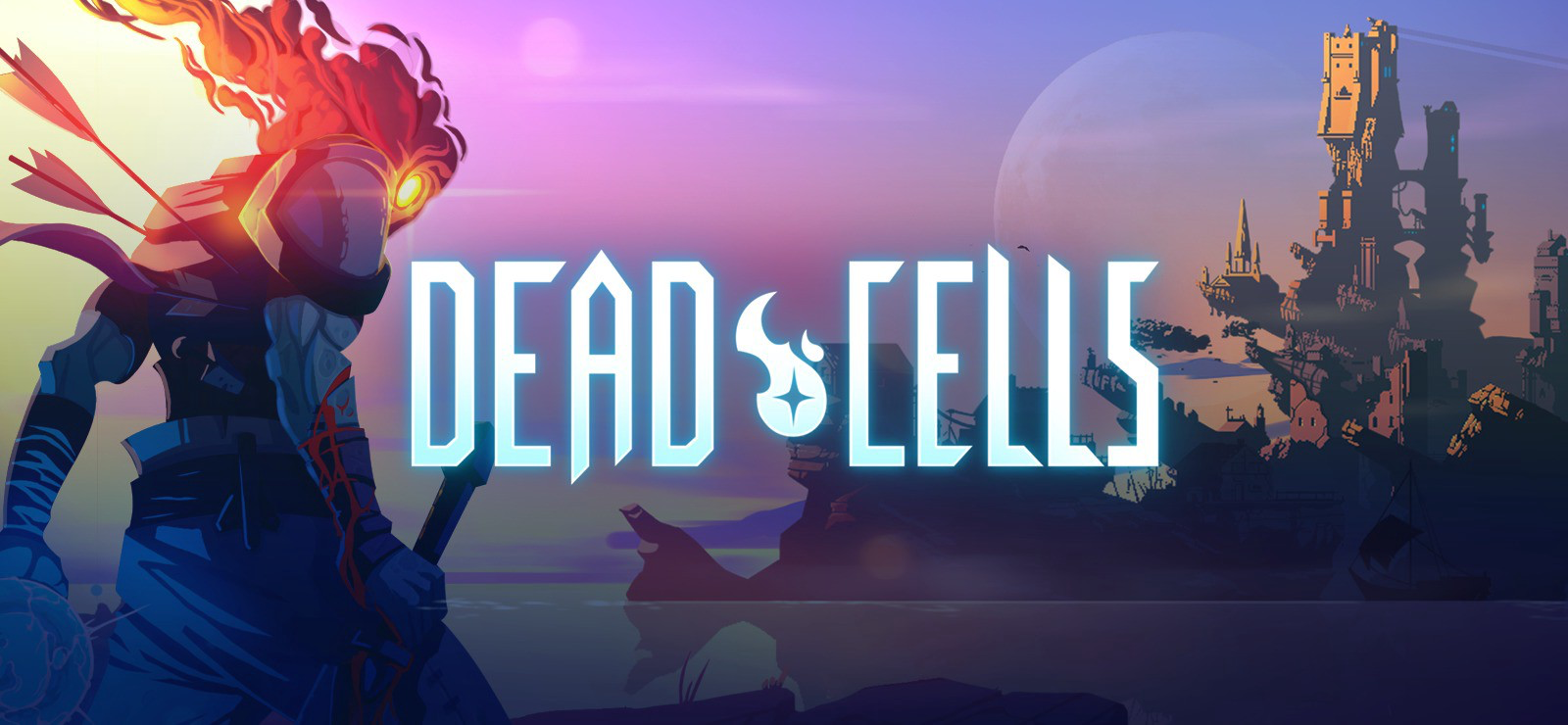





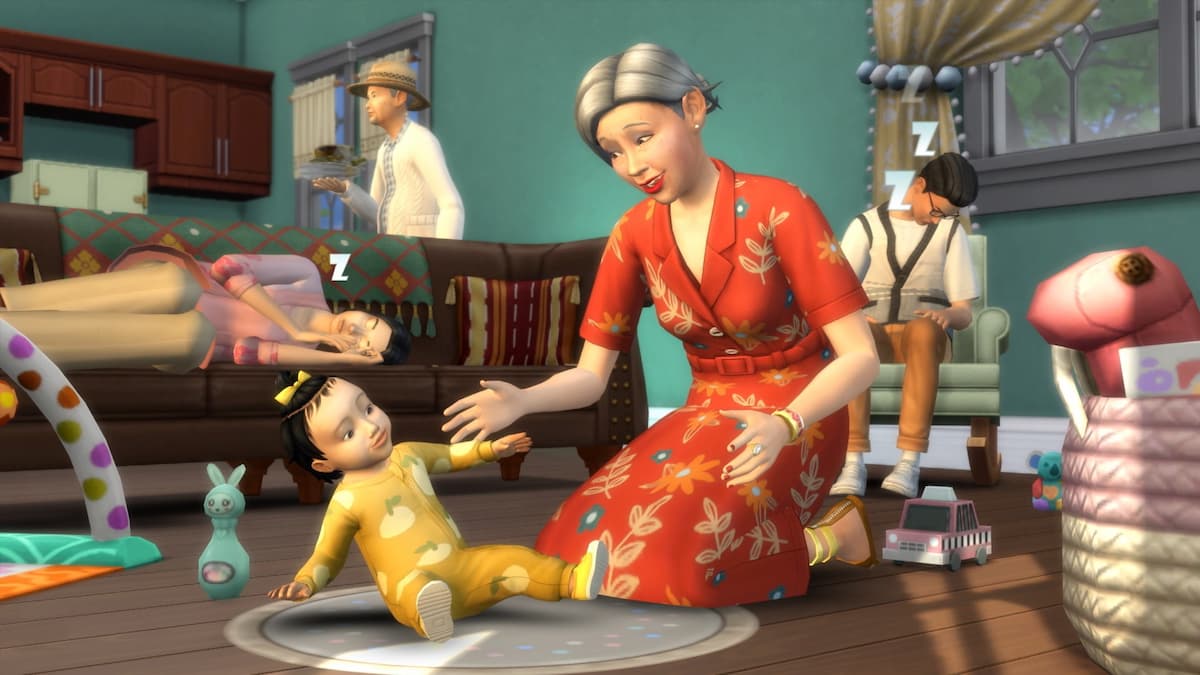

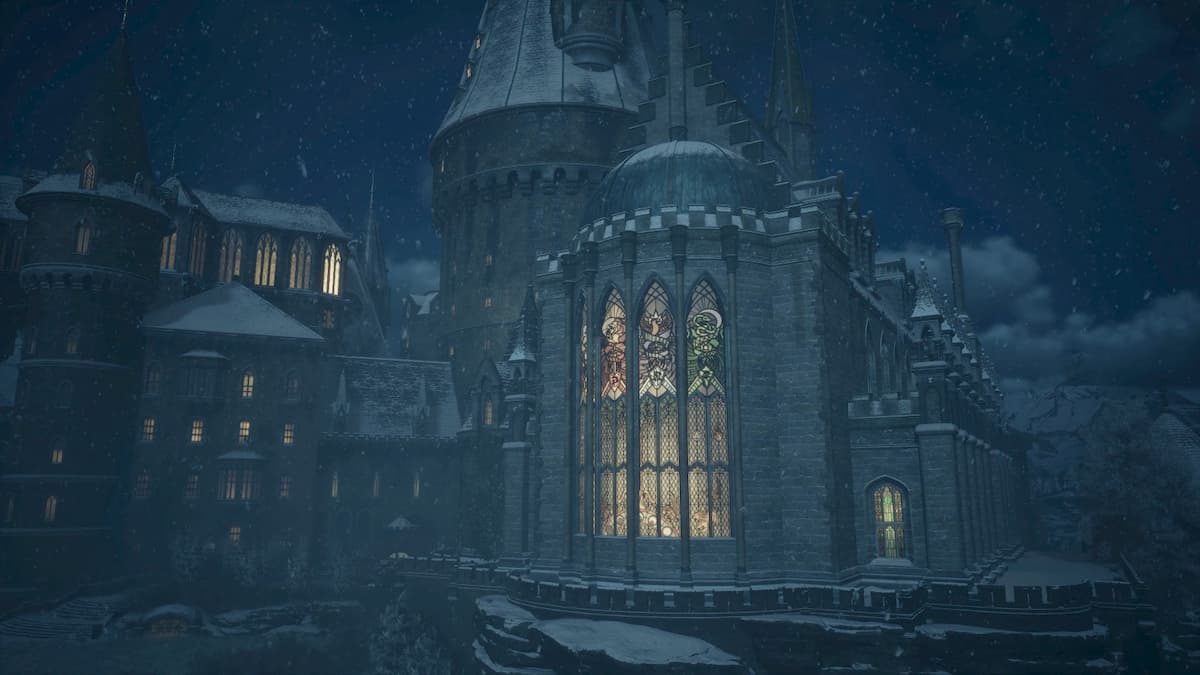
Published: Aug 17, 2018 01:55 pm